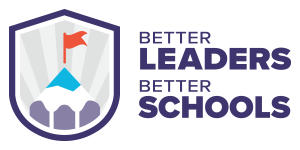If you have ever said, “It’s in the newsletter they should know,” or “Why are people asking questions on something I’ve already shared?” then this post is for you.
Former LinkedIn CEO Jeff Weiner has said, “Just when you are getting tired of sharing a message, that is the moment people are starting to listen.”
In addition to consistency and redundancy in communication, this post will offer a handful of ideas you can add to your school communication to make it more effective.
So what can you add to your school communication plan to make it more innovative and resonate with your staff and parents?
This is the exact topic we discussed in the mastermind, our school principal development community recently.
The question asked on the hot seat: How does your school communicate besides newsletters and email?
School communication is personal
One-on-one calls
A number of leaders mentioned that they have one-on-one calls frequently with staff. If this is focused on a new initiative they ask about concerns, answer as many questions as they can, and find out how people are feeling about the new plan.
In addition to checking-in on newly introduced plans and initiatives, if you collect data like birthdays and anniversaries this is a great time to connect as well.
One-on-one conversations are difficult at scale but critical to communication success. One way to work smarter and not harder is to check-in on key leaders and have those leaders interact with smaller groups of people. This looks like APs calling Department Heads, who in turn call their department members.
Handwritten notes
A handwritten note is a great personal touch and an effective way to communicate with staff and parents.
Think about it in the inverse — when was the last time you received a handwritten note? Living in an ultra-digital world, handwritten notes are few and far between.
I imagine that most readers of this blog post can count on one hand how many times they’ve received a handwritten note in the past 6-months. I also would bet that they can remember exactly who wrote those notes too.
If nothing else, a handwritten note expresses that you care and acts as an invitation to keep a conversation going.
Scalable School Communication
Surveys
Each week I send mastermind members a check-in survey. From a high level, I ask what challenges they currently face and how I can help. I also have leaders identify on a 1-10 scale how they are right now so I can prioritize who I reach out to.
I also use the survey questions to remind leaders of the importance of self-care (e.g. Did you take time this week to unplug from work? Did you eat healthy meals? Did you get enough sleep, etc.). Answering simple questions like this in a Yes/No fashion acts as a mirror for the leader taking the survey. I can use this data as a conversation starter with a leader I serve, but most importantly it reminds the leader of what they should be doing for themselves to be at their best.
Office Hours
I’ve used this as a school principal and running Better Leaders Better Schools. Essentially, I communicate ahead of time to people I serve, when during the work week I am holding office hours. This time is protected so I can be fully present and available to the leaders I serve. People sign up for 15-minute slots or just show up and we talk about whatever is a priority for them.
Check-in Buddies
Pair off staff and parents as check-in buddies. This scalable solution also puts ownership into the hands of your community. Define the boundaries and vision of what you’d like to see and then let your community run with it. You’ll be surprised by the results if you put in the energy to get it off the ground and nurture the group occasionally.
There are even automated solutions to do something like this. If your school uses Slack to communicate you could use an app called Donut to randomly pair up members to make sure they connect on a rotating basis.
Repurposed Content
Smart businesses do this with content marketing and schools have an opportunity to learn from industry here. Again, work smarter not harder.
What is the pillar content you create each week?
For most schools, it is an external or internal newsletter that is a one-stop-shop for communication. Pull out the main ideas and create shorter social media content from these big ideas.
Let’s say graduation is coming up. The content in your newsletter turns into shorter social media content.
Facebook can be long-form content and a link to an article or graduation page on your website.
Instagram could be a save the date, quote post, or highlight a soon to be grad.
Twitter could be a quick quote or encouraging post regarding graduation with a link to your website.
Tik Tok could be a short form interview with a graduate, could be the senior class dancing, or quick word from the principal.
The point is that the repurposed content is all created from the pillar content that appears in the newsletter.
And don’t forget that people learn in a variety of modes. How can you use video or podcasts to reach segments of your community that don’t want to read your newsletter?
Other school communication posts to read next:
If you enjoyed this post, then you’ll enjoy these other posts on communication:
Decision making and effective communication: a short post on how the top 1% of leaders communicate decisions.
Communication tips for principals: This is a podcast I did with mastermind member, Chris Jones. We recorded a coaching call and released it as a podcast to serve more school principals.
Improve your communication with story: This is a podcast I did with Professor Jared Hovarth, an expert in neuroscience. We nerd out on how the brain works and dig into how to tell stories that “stick” with your audience.



